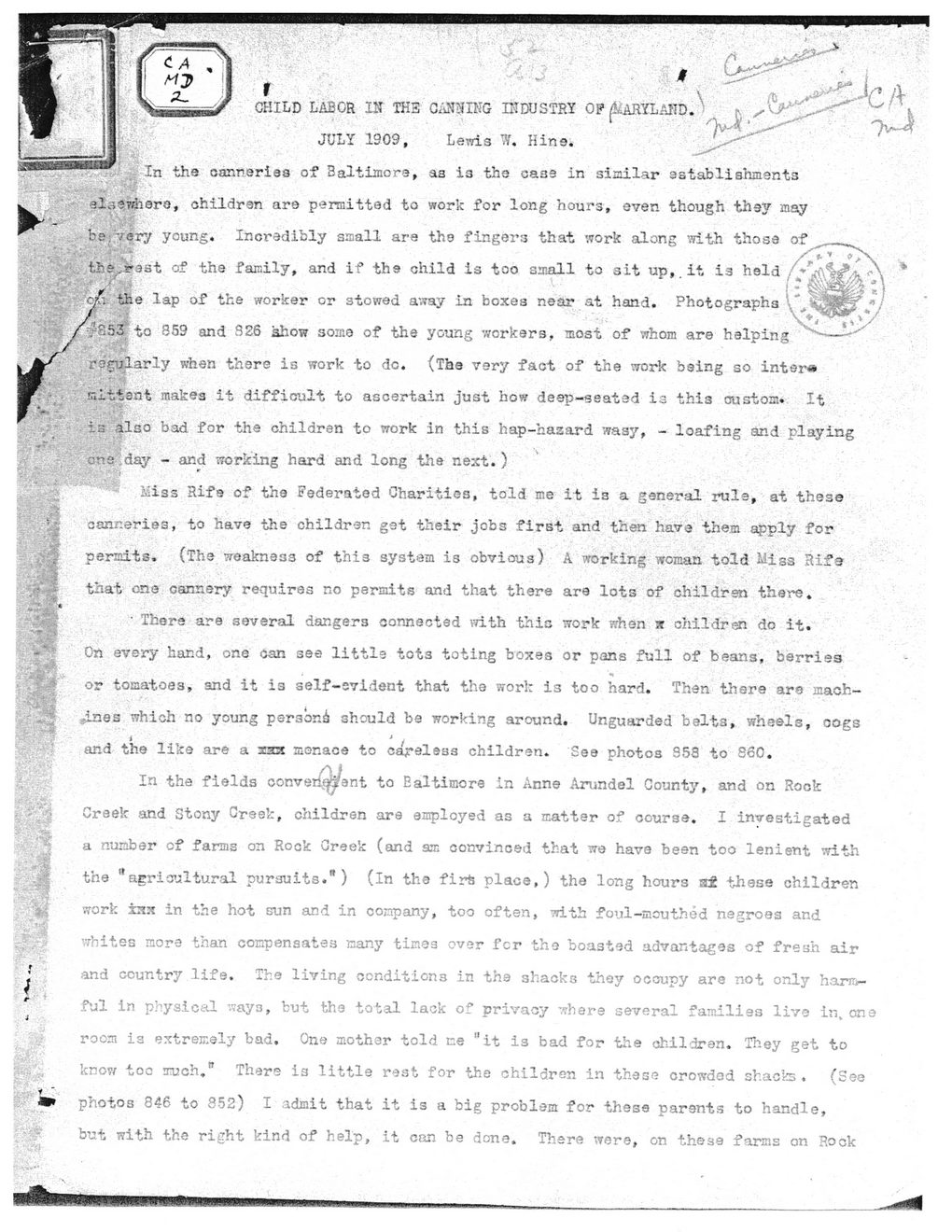This text was obtained via automated optical character recognition.
It has not been edited and may therefore contain several errors.
£:~&Ks '■'-~A’,y' ■ --A, -■. i# CHILD LABOR IN THE CiiMING HDUSTRY OP ^lARYLARD JULY 1909, Lewis W. Hina. In the canneries of Baltimore, as ia tho case in similar establishments r'ela^ifrera, children are permitted to work for long hour3» even though they may beoary young. Incredibly small are tho finger3 that work along with those of 'the -faoily# and if the child is too small to sit up,, it is held ,t;$&© lap of the worker or stowed away in boxes near at hand. Photographs E - - *4 #853*to 859 and S26 show some of the young workers, most of whom are helping - Ve'fpilarly when there is work to do. (The very fact of the work being so inter* "■ ‘ .ff-4 ttent makes it difficult to ascertain just how deep-seated ia this custom. It is"also bad for the children to work in this hap-hazard wasy, - loafing and playing drtefday - and working hard and long the nest.) “•gf Miss Rife of the Federated Charities, told me it is a general rule, at these canneries, to have the children get their jobs first and then have them apply for permits. (The weakness of thi3 system is obvious) A working woman told Miss Rifs that one cannery requires no permits and that there are lots of children there. ■ There are several dangers connected with this work when x children do it. On every hand, one can see little tots toting boxes or pans full of beans, berries 'h or tomatoes, and it is self-evident that the work is too hard. Then there are mach- »ines which no young persorJ should be working around. Unguarded belts, wheels, cogs » * . and the like are a 233 menace to careless children. See photos 353 to 860. In the fields oonvetl^/ant to Baltimore in Ann® Arundel County, and on Rock Greek and Stony Creek, children are employed as a matter of course. I investigated a number of farms on Rock Creek (and sen convinced that we have been too lenient with the 11 agricultural pursuits.") (in the firfe place,) the long hours these children work isx in the hot sun and in company, too often, with foul-mouthed negroes and whites more than compensates many times over for the boasted advantages of fresh air and country life. The living conditions in the shacks they occupy are not only hanr*- ful in physical way3, but the total lack of privacy where several families live in,one room is extremely bad. One mother told ne "it ia bad for the children. They get to know too much/ There is little rest for the children in these crowded shacks. (See photos 846 to 852) I admit that it is a big problem for these parents to handle, but with the right kind of help, it can be done. There were, on these farms on Hock If-** I#

Peerless Oyster Document (003)